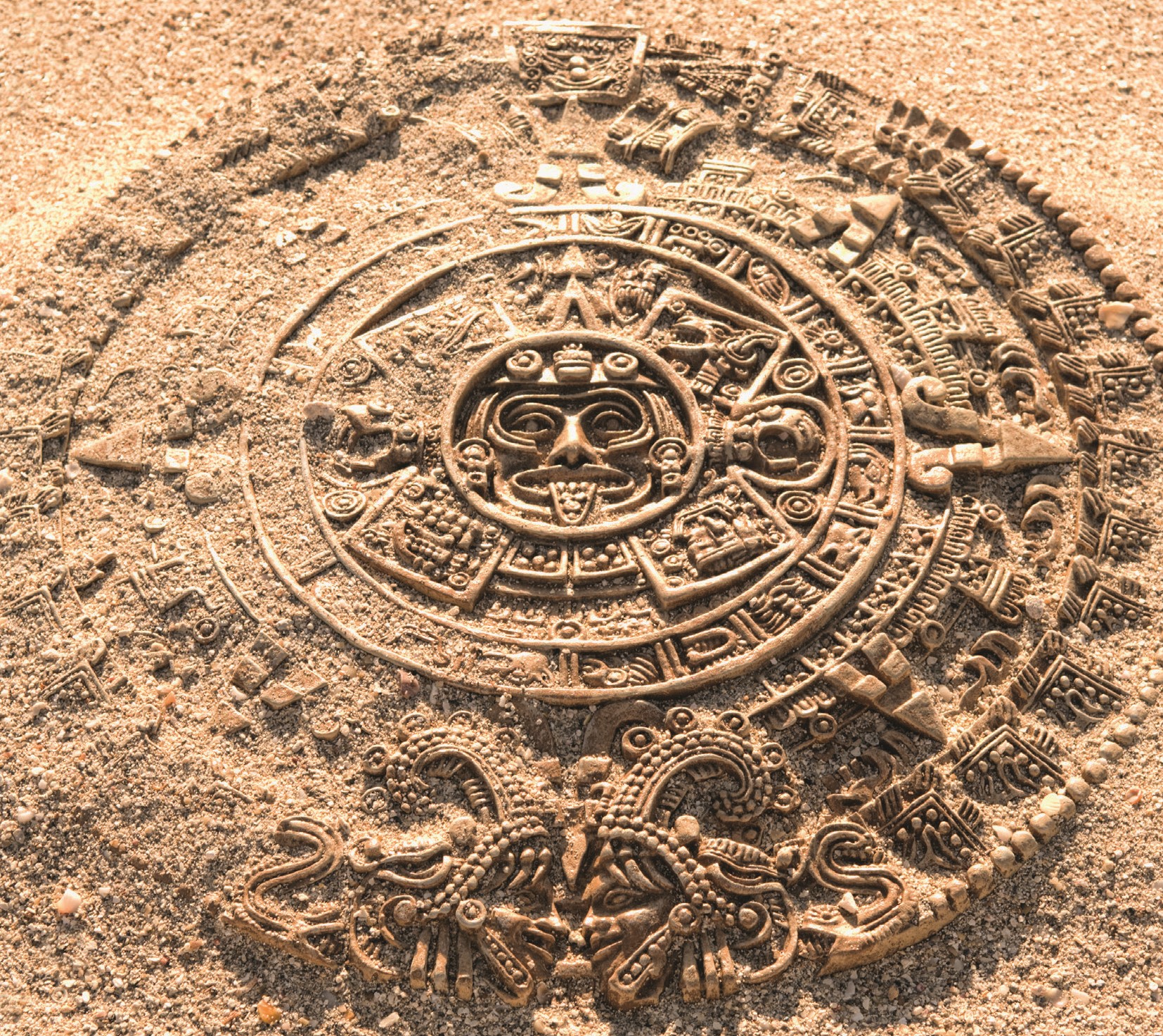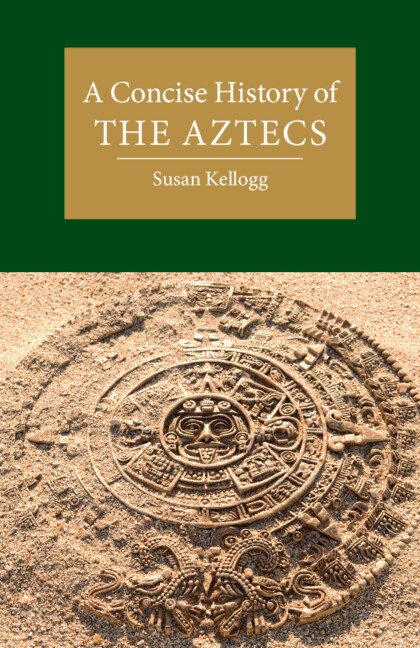
When I tell anyone what I study, people (even sometimes other academics) think it’s weird, distasteful, or just arcane. If the Indigenous population of the Americas is often seen as an “other,” then Aztecs are the other of the other. In seeking to dispel that notion, I wrote A Concise History of the Aztecs to demonstrate Aztec humanity, intellectual achievement, and resilience in the face of centuries of challenges. Beyond undermining the stereotypes that have so shaped perceptions of this civilization,* I wanted to pay tribute to the scholarship that shaped me as well as bring attention to the tremendous amount and very high quality of archaeological, ethnohistorical, linguistic, and art historical scholarship of several generations of researchers following in the footsteps of Pedro Carrasco, Charles Gibson, Miguel León-Portilla, James Lockhart, and William Sanders. This interdisciplinary research has deepened understandings of the complexity of Aztec patterns of governance and production, family life and types of social interactions, and ways of thinking as expressed through their spiritual, artistic, literary, and scientific endeavors. Their history, lifeways, and forms of expression all would shape the ways Aztec groups adjusted and survived a devastating colonial experience in which they themselves created a colonial written and visual record that would be used to depict their culture, history, and image by themselves and others.
Who were the Aztecs?
The name “Aztec” gets used in a variety of ways. It is sometimes used to refer to the grouping known as the Mexica who called themselves “Azteca” early in their history but then were commanded by a patron deity to change that name. Late colonial and nineteenth-century writers like Francisco Javier Clavijero and William Prescott popularized the use of “Aztec” for the more accurate ethnic identifier, or ethnonym, “Mexica” for the people who lived in the city of Tenochtitlan, which became Mexico City after war with the Spanish. The term “Aztec” has also been used to refer to the peoples encompassed by the city-states that would include the Triple Alliance confederation made up of the Tepaneca, the Acolhua, and the Mexica, or even more broadly to all the linguistically-related peoples who spoke Nahuatl dialects in and around the Basin of Mexico. Because the ethnonym or ethnic identifier “Aztec” remains widely recognized, I use it in the book to refer to Nahua communities and peoples before the introduction of colonial rule. I use the term “Nahua” for colonial and contemporary Nahuatl-speaking peoples. Contemporary Nahuatl-speaking peoples occasionally use this identifier for themselves. More often, however, today’s Nahuatl speakers use “Mexicano” or “Mexicanero” as their ethnonym. They may also use “masehuali” (pl. masehualmej), which comes from the prehispanic Nahuatl word for commoner (macehualli) and refers to Nahuas or Indigenous people generally. While the Mexica were the most populous of Aztec groups, scholarship has shown the vast array of Aztec communities which differed from one another in a variety of ways, not least in their sense of history and identity, so that like the Maya, while cultural and linguistic commonalities existed, those we call Aztecs never saw themselves as a single people.
What is the book is about?
Throughout the book I explore the integrated nature of Aztec ways of seeing and living in the world. After an introductory chapter that explains the main themes, sources, and early history of the Aztecs, in the second chapter on religion, I argue that not only did religion have material significance but that mythical transformations, deity beliefs, and ceremonial practices underlay the hierarchical and egalitarian relationships around which Aztec political, economic, and social life occurred. In the third chapter, I observe that altepetl, the kingdoms or city-states that constituted their political structure, were key to the organization of political and economic relationships across the Aztec region. But these were also organized around local communities whose relationships of reciprocity and hierarchy defined the internal structures of altepetl. In the fourth chapter, I examine Aztec economic ideas and patterns of production, exchange, and consumption in more detail. These ideas of reciprocity and hierarchy were critical to the workings of Aztec economic activities. Labor, tribute, and commerce fed into a political and social organization that was becoming organized in more hierarchical ways. Nonetheless, throughout Aztec history, they prized reciprocity because of the need to keep the Aztec world in balance. The household as an arena for economic, political, and religious activities is explored in the fifth chapter as are marriage, family life, education, gender roles, and sexuality. In the sixth chapter, Aztec creativity and intellectual life come to the fore. Aztecs represented their ways of thinking and living to themselves and others through science, writing and literature, and art. Ultimately, these areas would play pivotal roles in their survival and resilience after Spaniards arrived. In the seventh and final chapter, how they experienced what most commonly is referred to as the “Spanish conquest” is explored. The chapter describes how a civilization that most think of as extinct actually lives on in both its direct, Nahuatl-speaking descendants as well as through contemporary Mexican and even global ideas about them. While using a thematic organization, I stress how the relationship between hierarchy and reciprocity changed over time in relation to the creation and use of value, the transformations involved in such changes, and the way the search for cosmic and worldly balance persisted.
What are the major themes of the book?
The most important theme threaded throughout the chapters is that the ideas of value, transformation, and balance can be found throughout Aztec thinking and ways of acting in the world. I am not arguing that Aztec peoples would necessarily recognize or define those as core ideas, but I believe these concepts help to explain the coherence and integration of Aztec society. Value creation, transformation of people, things, and deities as well as never-ending cycles of cosmic creation and destruction fueled the Aztec search for order, harmony, and balance. The Aztec world sought to find a balance between order and chaos, one that could never be a permanent state. I use the thematically organized chapters to explore how these ideas were expressed and changed over time and how aspects of these concepts have survived in the modern world. Other important ideas that occur across the chapters have to do with gender, especially the importance of both women and men to economic production, governance, and ritual activities; hierarchy; and the existence of idiosyncrasy and resistance. I highlight particular written and visual sources so that non-specialist readers will gain a sense of where textual information comes from about Aztecs and how Aztec intellectuals—writers, historians, artists—themselves shaped what we can know about them. Finally, I problematize some of the terminology commonly used when exploring their civilization and history, especially “human sacrifice,” “conquest,” and “myth,” to argue that these loaded terms are inextricably linked to the highly negative perception of Aztecs that undermines appreciation of their achievements in many realms and leads to significant misunderstandings of their role in world history. Misinformation keeps being perpetuated despite decades of scholarship that shed much more accurate light upon them.
How about teaching the book?
As the above sections indicate, the book covers a lot of ground but my goal as I wrote was always to enable readers, especially students and instructors, to grasp essential information about many aspects of how Aztecs lived in a coherent way. I stress that they were people who acted with intent, not automatons controlled by beliefs and practices over which they had no agency. While not a primer in the Nahuatl language, I provide numerous Nahuatl terms for the things and ideas of the Aztec world so that readers are introduced to the words and concepts they used. My students greatly enjoyed learning some of the vocabulary that rendered the Aztec world more vivid and real for them. That vocabulary helps to illustrate the complexity of their thinking about their natural, social, and spiritual worlds, and the words are listed in a glossary organized chapter-by-chapter to emphasize the terminology related to specific themes. The book closes with an extensive bibliographic essay intended to provide readers with references to many primary and secondary sources and to illustrate, to the extent possible in an overview, how research methods, ideas, and analytical frameworks developed over time, and written with an eye to the current state of this field of study.
* The term “civilization” appears in the book not to imply superiority or that a single pathway toward civilization has ever existed. Instead, the word acknowledges the complex, class-based, and culturally diverse practices encompassed by the Nahuatl-speaking peoples of the Basin of Mexico region and its surrounding areas.

Latest Comments
Have your say!